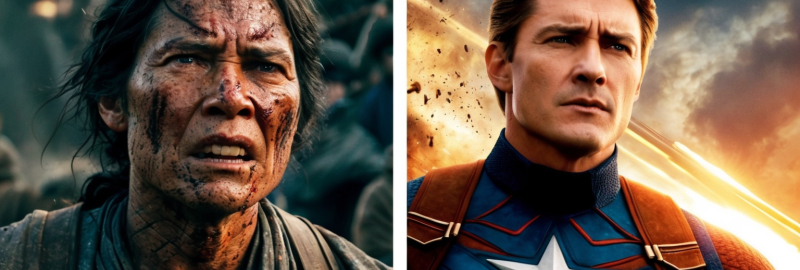
This piece explores a well-known author’s perspective on how modern heroic films handle on-screen violence compared to more raw depictions found in his own work.
The writer, whose career has been marked by unflinching portrayals of bloodshed and unforeseen tragedy in fictional settings, argues that many contemporary heroic movies choose a sanitized, family-friendly approach instead. He feels that while his narratives embrace the intensity of brutally realistic conflict, current cinematic portrayals often lack the genuine consequences that come with major destruction.
During a recent interview with a prominent publication from the United Kingdom, he voiced displeasure with the way some movies depict villains causing widespread havoc without showing the realistic aftermath of such devastation. Despite scenes where entire urban areas are decimated, the films tend to omit explicit depictions of bloodshed and personal suffering.
He maintained that if the cinematic representation of a villain wreaking havoc across city blocks is stripped of visceral detail, the impact is lost. According to his view, failing to present the necessary intensity undermines the narrative, leading filmmakers to produce a version that is harsh yet restrained. He emphasized that without true representation of the brutality, the intended force of the scene is essentially compromised.
In contrast, his own work, a dystopian narrative describing a ruthless contest among teenagers who must keep moving at all costs, is set to "be transformed into a feature-length production by a" notable director. The upcoming adaptation promises to remain faithful to the original text by not holding back on the depiction of intense and raw violence.
The movie, showcasing a lineup that includes several well-known actors, is scheduled to debut in U.S. theatres on September 12. It showcases not only a relentless competition but also the unflinching portrayal of consequence that the author feels modern heroic movies often miss.
The discussion his remarks have ignited centers around the balance between preserving artistic integrity and meeting the expectations of mainstream, family-oriented entertainment. Consider the following points regarding his stance:
- The absence of graphic detail in major action sequences can lessen the impact on viewers.
- There is a noticeable contrast between the brutal realism in his narratives and the sanitized approach of many current films.
- This perspective raises important questions about how far filmmakers should go in portraying the realistic aftermath of widespread destruction.
In the end, the comparison invites audiences to reexamine the differences between authentic depictions of turmoil and a more restrained, albeit less compelling, portrayal of violence. Do you agree with his take?
